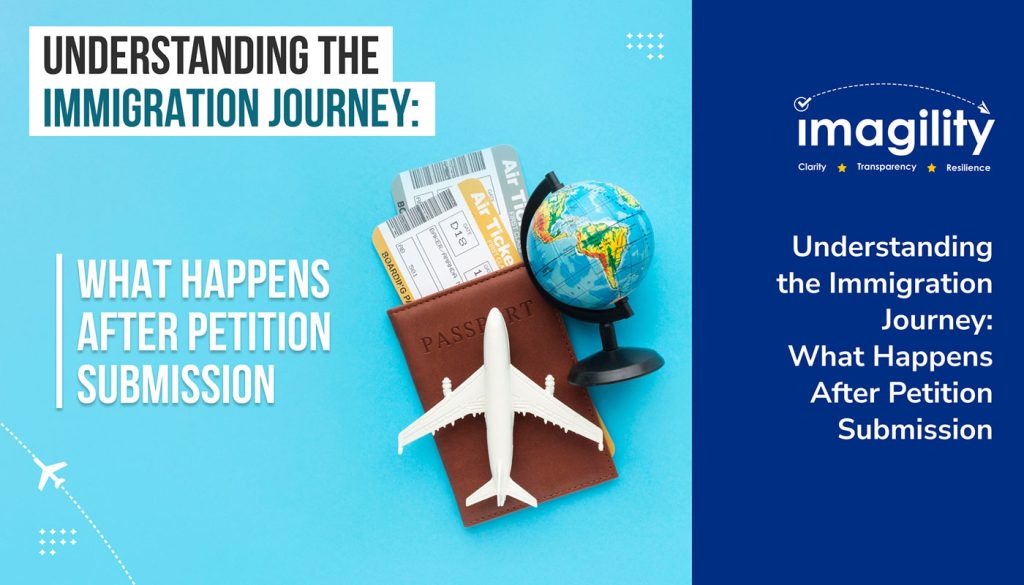Submitting an immigration petition is a major milestone, but it’s not the end of the road. Once the paperwork is sent to USCIS, many clients (and sometimes even attorneys) are left wondering: “What happens next?”
Understanding the steps that follow a petition submission helps manage expectations, reduce anxiety, and prepare for what’s to come. Let’s walk you through the typical process after a petition is filed.
1. You’ll Receive a Receipt Notice
Once USCIS receives your petition, they’ll send a Receipt Notice, also called Form I-797C. This is your confirmation that USCIS has received your application. This notice includes
- The date your petition was received
- A unique receipt number, which you can use to track your case online
Attorneys filing for their clients can share this receipt notice with them and explain its purpose, as it’s often their first sign of progress.
2. USCIS Reviews the Petition
Next, USCIS begins reviewing the petition. They’ll check for the following.
- Completeness of the application
- Proper filing fees
- Supporting documents that prove eligibility
If everything looks good, it moves to the next stage. If something is missing or unclear, they’ll reach out.
3. Possible Biometrics Appointment
In some cases (like green card applications), USCIS will schedule a biometrics appointment. Here, the applicant provides fingerprints, a photo, and a signature. This is used to run background checks. This step doesn’t mean there’s a problem, but is a routine part of the process.
4. Request for Evidence (RFE) or Notice of Intent to Deny (NOID)
Sometimes, USCIS needs more information to make a decision. That’s when you might get
- A Request for Evidence (RFE) – asking for specific documents or clarification
- A Notice of Intent to Deny (NOID) – issued if USCIS believes the petition may be denied, but gives you a chance to respond
Timely and accurate responses are critical here. Delays or weak responses can hurt the case. You will most likely receive an RFE if you haven’t submitted all the required supporting documents along with your petition. You must promptly respond to the RFE with the required information to make sure your petition is not delayed or denied. That’s why using tools like Imagility’s RFE response builder can make a big difference.
5. Decision: Approval or Denial
After reviewing all the documents and responses, USCIS makes a decision
- Approval – The petition moves to the next step in the immigration process (like visa stamping or status change)
- Denial – The petition didn’t meet the requirements. Depending on the case, there may be options to appeal or reapply.
6. What Happens After Approval?
This part varies depending on the type of petition:
- If the beneficiary is outside the U.S., they’ll attend a visa interview at a U.S. embassy or consulate abroad
- If the beneficiary is already in the U.S., they may apply to adjust status and complete the next steps to remain legally in the U.S.
Attorneys play a crucial role in guiding clients through these next steps and making sure they stay compliant.
Final Thoughts
Submitting an immigration petition is just one step in a much larger journey. From receiving a receipt notice to handling RFEs or preparing for interviews, every stage requires attention and care.
For attorneys and law firms, managing all this manually can be overwhelming. Platforms like Imagility streamline the entire post-submission process with features like real-time case tracking, RFE response builder, and petition analysis tools that catch issues before they turn into problems.
Book a free demo with Imagility and see how we help attorneys and clients manage their cases.









